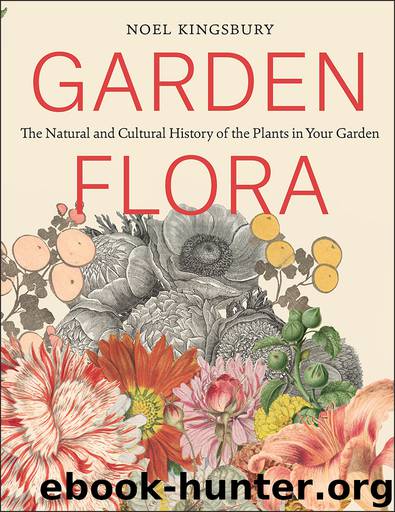Garden Flora by Noel Kingsbury

Author:Noel Kingsbury [Kingsbury, Noel]
Language: eng
Format: epub
Publisher: Timber Press
Published: 2016-03-01T16:00:00+00:00
Leucanthemum Asteraceae
Forty Eurasian herbaceous perennials make up this genus, whose name derives from the Greek for “white flower.” It has, over the years, been redefined by botanists several times. All are clonal perennials, of a distinctly competitive or pioneer-competitive character. They are mostly plants of grassland. Leucanthemum vulgare (ox-eye daisy) is a well-known component of wildflower seed mixes in Europe, exuberant in the first few years before (usually) declining to insignificance. Traditions in several parts of Europe link L. vulgare and other species to mid-summer celebrations but also grant it the power to keep away thunderstorms, so bunches of it were sometimes hung on farm buildings.
Leucanthemum xsuperbum (Shasta daisy) is among the most familiar perennial garden flowers, and one which shows a great ability to survive neglect. It is the crowning achievement (for the domestic gardener) of that most flamboyant of plant breeders, Luther Burbank, who claimed to have made this particular cross from two European and one Japanese species; later work, however, has suggested that only two species were used, or possibly just the one, L. lacustre (he famously did not keep records). Burbank raised more than 100,000 seedlings over a six-year period, constantly selecting those which had the biggest flowers and those which bloomed the longest; he named the resulting plant after a peak visible from his California farm, Mount Shasta. Over the years, the plant has thrown up a number of mutations, which have provided some useful variation. There is one good story, from England, about nurseryman Horace Read, who was on a train journey sometime in the 1920s, spotting a semi-double form of the plant growing on an embankment. On his return journey he pulled the cord for the emergency brake, leapt off the train, and dug up the plant. He used the plant in further breeding, giving the Shasta daisy a second lease of commercial life.
Download
This site does not store any files on its server. We only index and link to content provided by other sites. Please contact the content providers to delete copyright contents if any and email us, we'll remove relevant links or contents immediately.
Turbulence by E. J. Noyes(7935)
The Thirst by Nesbo Jo(6826)
Gerald's Game by Stephen King(4570)
Be in a Treehouse by Pete Nelson(3941)
Marijuana Grower's Handbook by Ed Rosenthal(3619)
The Sprouting Book by Ann Wigmore(3543)
The Red Files by Lee Winter(3366)
The Remains of the Day by Kazuo Ishiguro(3291)
Sharp Objects: A Novel by Gillian Flynn(2952)
Christian (The Protectors Book 1) by L. Ann Marie(2653)
Organic Mushroom Farming and Mycoremediation by Tradd Cotter(2626)
The Culinary Herbal by Susan Belsinger(2429)
Stone Building by Kevin Gardner(2347)
The Starter Garden Handbook by Alice Mary Alvrez(2281)
Lilac Girls by Martha Hall Kelly(2256)
The Unlikely Pilgrimage of Harold Fry by Rachel Joyce(2215)
The Lean Farm Guide to Growing Vegetables: More In-Depth Lean Techniques for Efficient Organic Production by Ben Hartman(2096)
Urban Farming by Thomas Fox(2061)
Backyard Woodland by Josh VanBrakle(1893)
